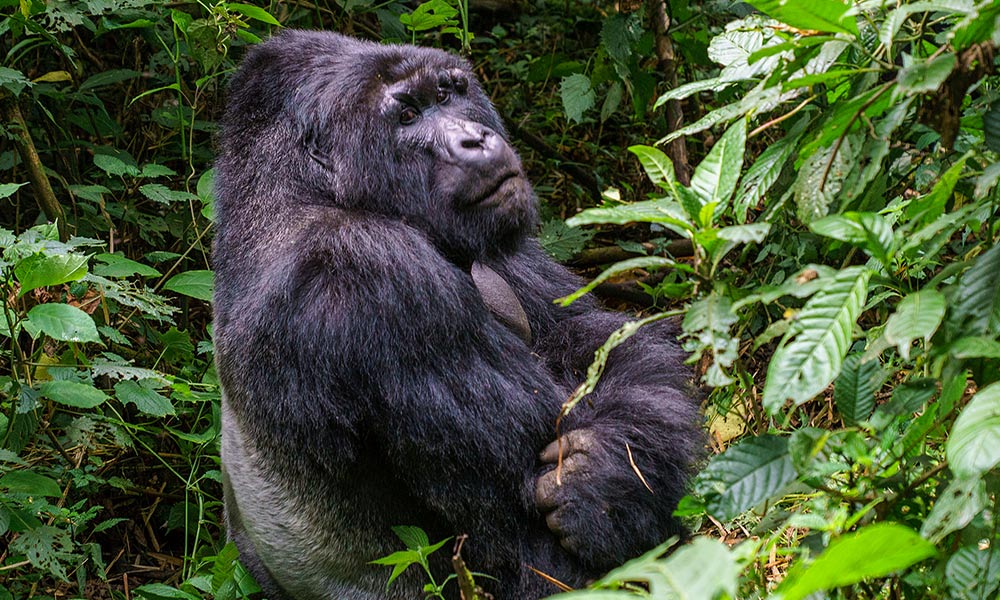There are a huge variety of trees in the bush, from the well known thorny acacia species to the iconic baobab. This section will give you an overview of the most commonly encountered or sought after trees and their known uses.
For many thousands of years the indigenous people of Africa and other countries have used trees in many ways, including wood for shelters, fuel and tools, as a source of food and water, for medical uses and for shade.
Trees are also used by animals, as a home, to feed on, as a look out post and as a retreat from predators. They play a vital role in all the ecosystems of our planet.
Knob Thorn – Acacia nigrescens
The acacias are iconic bushveld trees, often identified by their sharp white thorns, small green leaves and long pods.
The knob thorn can be most easily identified by its impressive knobbly bark featuring thorny protrusions. The wood is very hard and tough but can be used for woodworking, and the tree itself is much favoured by the bush animals such as giraffes, kudu and elephants.
Sickle Bush – Dichrostachys cinerea
This tough tree forms dense clusters of bush and is responsible for much bush encroachment, and is very difficult to remove and control. It is also the cause for many a field guides’ punctured tyres, as the sharp thorns are extremely tough and easily pierce the thick tyres of a game viewing vehicle.
When in flower, it forms attractive lantern-like flowers, purple and yellow in colour, which alludes to one of its other common names as the Chinese Lantern Tree or the Christmas Tree.
Despite its invasive nature, it also has medicinal properties, including the treatment of skin ailments, tooth and stomach aches.
Mopane – Colophospermum mopane
This large tree is an invasive species that creates dense woodland when it grows in large clumps. The bark from the tree makes very good rope, and the wood has an extract that is used to treat eye inflammation and even venereal disease.
The tree is also food to both elephants and humans. There is a creature known as a mopane worm, or Imbrasia belina, which is the larvae of the Spiny Emperor Moth. It lives on the tree and is considered a delicacy.
Leadwood – Combretum imberbe
This hardy deciduous tree grows very slowly, creating extremely dense, hard wood that burns for a long time. The tree remains standing even after it has died, and some specimens have been dated at several thousand years old.
When travelling through the bush you will encounter both living and dead specimens, the living ones having a wide umbrella-like crown, with the dead ones standing as grey trunks with a few branches.
Red Bush Willow – Combretum apiculatum
Like the leadwood, this tree has heavy, dense wood that is excellent fuel for burning. It is an abundant sight in the bush, and its leaves have been used for medical purposes to treat abdominal pains by boiling the leaves to create a steam inhalant.
Marula – Sclerocarya birrea
A well known bushveld tree that produces edible fruits rich in vitamin C, and which elephants are very keen on, with rumours that they become ‘drunk’ after eating these fruits, although this has not been scientifically proven.
Even the nuts of the fruit can be eaten, and the fruit skin contains antihistamines which are used to treat insect bites.
In the Western world the tree is well known for its alcoholic properties, the fruit being used to create beer and a type of liqueur. The bark of the tree is also used to treat diarrhoea, dysentery, and has been used as a malarial prophylactic.
Baobab – Adansonia digitata
This African icon is easily recognisable due to its strange shape. The baobabs are amongst the oldest living inhabitants of the bush, with specimens dated at over 1,000 years old.
The bark can be used as rope, and the powedery pulp of the fruit makes a refreshing drink, rich in vitamin C and antioxidants. The enormous trunk of the tree often forms a hollow in which people and animals have taken shelter, with one tribe using the baobab shelter for their mothers to give birth in.
Baobabs are pollinated by fruit bats and no other creature, and are dependent on these animals for the ongoing reproduction of the species. Much superstition and intrigue surrounds these mystical trees and their sight in the bush is always an interesting one.
Buffalo Thorn – Ziziphus mucronata
This useful tree features tough, sharp thorns on its wiry stems, one thorn pointing forward and one pointing backward, making it very easy to become entangled in it – hence its nickname as the “wait a while” tree, as you’ll be going nowhere fast if you get hooked amongst its thorns!
The young leaves can be eaten when boiled, and the fruit can be eaten raw. A poultice of leaves may be used to treat skin swellings.
The powdered bark and leaves have been used to treat chest problems, the roots may be used as a treatment for dysentery, and the leaves and shoots can be boiled as an inhalant for curing measles.
Jackal Berry – Diospyros mespiliformis
As the name suggests, jackals appear to be fond of the fruit from this tree, and it can also be eaten by humans.
The tree has a hard, dark wood that is ideal for carving, and it also contains medicinal properties that may be used to treat a variety of ailments from coughs to dysentery.
As with all trees and other plants in the bush, if you know how useful they are, it’s easy to see how they have played such an important part in the ecosystem.








